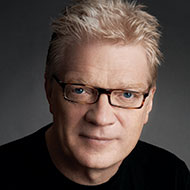
“How many of you planned the life you have today?” With this provocative introduction at the opening session of ICMA's 98th Annual Conference, Sir Ken Robinson, internationally recognized leader in the development of creativity, innovation, and education developed his premise that creative people are not rare—the creativity is a characteristic of being human. As young children people have tremendous confidence in their imagination, but it tends to dissipate as we get older. We forget what imagination can accomplish. Robinson stressed the inherent deep natural powers of creativity as evidenced by the way we have created our lives. Each life is lived uniquely; there are no two identical.
Creativity and Innovation Respond to Challenges
It is this very resource of creativity that city and county leaders must turn to as communities face extraordinary challenges and opportunities. Three factors underpin these challenges and opportunities:
- We are living in unique times—times of revolution.
- We have to think differently about talent.
- We have to do things differently.
The post-war world of the 1950s is incomparable to today’s world. Technology has transformed our lives since then and in the last 10 years. Digital technology will transform cities around the world. This digital transformation is part of the revolution. The send part is population.
We are the largest generation ever to have lived on the planet. Escalating population growth has happened in the last 40 years, and the current growth is occurring in developing economies. Population growth tends to decline with education and prosperity, and the world is becoming more urbanized as people look for economic opportunity. We are now faced with mega-cities, with 50% of the world’s population now living in cities.
How many people can the earth sustain? We will face scarcity of resources—especially water, which relates to scarcity of food. Consumption is a major factor. If everyone consumed at the same rate as we do in North America, the earth could not even sustain the current population. Leaders of communities will have to help their staffs and residents find innovation solutions to address scarce resources.
How Do We Innovate?
We begin by challenging our perceptions. In the west, the culture is one of individualism. In the east, it is a culture of community. The cultures see things differently. We can learn to change our perceptions and see differently—to begin to innovate.
The challenges that we face are threefold:
- Economic-Many of the industrial and manufacturing cities are decaying. Cities grow up around a purpose. Without purpose they decay.
- Cultural-We are experiencing cultural complexity.
- Personal-How do we make places where people want to be?
Cities have to reinvent themselves and be adaptable to change. Leadership requires a belief in the human capacity to innovate. Innovation puts creative ideas into practice. Seeds of possibility are waiting for city and county leaders to create the conditions for growth. Invest in people; have faith in the human capacity for creativity. Leaders must create a culture that facilitates innovation.
ICMA is grateful to its Strategic Partner ICMA-RC for sponsoring the opening session.
New, Reduced Membership Dues
A new, reduced dues rate is available for CAOs/ACAOs, along with additional discounts for those in smaller communities, has been implemented. Learn more and be sure to join or renew today!
